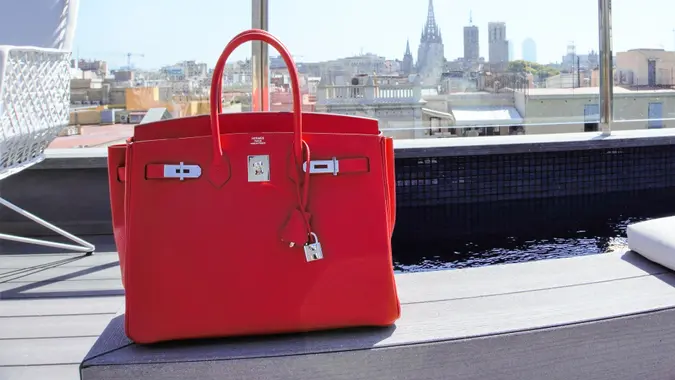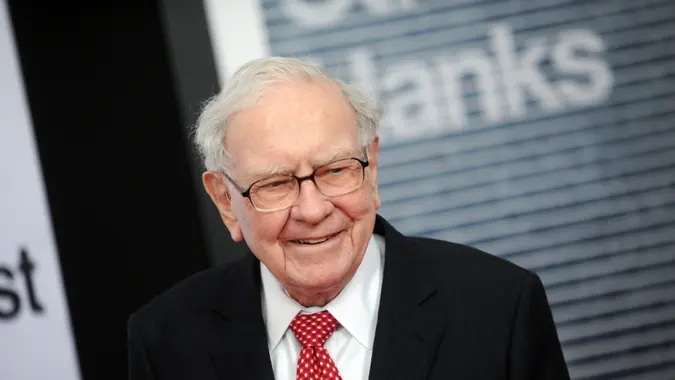The Best Uses for $1,000, $5,000 and $10,000 in Cash Today

Commitment to Our Readers
GOBankingRates' editorial team is committed to bringing you unbiased reviews and information. We use data-driven methodologies to evaluate financial products and services - our reviews and ratings are not influenced by advertisers. You can read more about our editorial guidelines and our products and services review methodology.

20 Years
Helping You Live Richer

Reviewed
by Experts

Trusted by
Millions of Readers
Wondering what to do with a bundle of cash, whether it amounts to $1,000, $5,000 or even $10,000? You aren’t alone, even in these tough times, although you might consider yourself to be fortunate enough to be in possession of some discretionary cash flow.
Many people would simply stick that money in a high-yield savings account, but even at elevated rates, depreciation eats away at the dollar’s value faster than the interest. Here are some smart investing decisions for your money no matter how high a stack you’re holding, although the first moves towards financial security aren’t necessarily investment at all.
What To Do With $1,000 in Cash Right Now
Have $1,000 burning a hole in your pocket? The first thing to do, according to financial guru Dave Ramsey: Create a starter emergency fund, if you don’t have one already. In fact, that’s “Baby Step No. 1” on Ramsey Solutions‘ list of seven moves to strengthen your financial position.
If you’ve already tackled that, perhaps a bit of debt control is in order. After all, with the average credit card annual percentage rate coming in at over 20%, paying high interest is just burning money for no good reason and no benefit to yourself. It’s simple math: if debt interest is higher than investment yield, debt reduction is the first use for discretionary cash holdings. You have to plug that hole, according to Mark Cuban.
“The best investment you can make is paying off your credit cards, paying off whatever debt you have,” the business mogul told MarketWatch. “If you have a student loan with a 7% interest rate, if you pay off that loan, you’re making 7%, that’s your immediate return, which is a lot safer than picking a stock, or trying to pick real estate or whatever it may be.”
How Should You Invest 5,000 in Cash?
Once the emergency savings fund has been established –and bolstered perhaps a bit higher, to a few thousand dollars or more, if possible, per finance guru Ramit Sethi — and all high-interest debt abolished, what’s next?
According to “Shark Tank” star and famed investor Kevin O’Leary, you really can’t beat the relatively liquidity and safe returns offered up by Treasury bills.
“The U.S. Treasury Bill still holds the crown as the safest place to park your money — even when the market’s throwing a tantrum. You want to bet on a stable economy? You go with the one the world runs to in a crisis,” O’Leary wrote on LinkedIn earlier this year.
Kiplinger noted that Treasury bills most commonly offer maturities in monthly, bimonthly, quarterly, semiannual, and yearly ranges, allowing for flexibility based on your own fiscal situation.
For the High-Rollers Looking To Splash Out $10,000 in Cash, Where Should You Invest?
Those relatively cash-wealthy investors looking to make their money work for them might consider “long-term safer holdings that appreciate and are well-diversified,” per YouTuber and finance personality Humphrey Yang (provided you’ve got your security fund in place, and debt is taken care of).
“I’m talking about index funds and ETFs [exchange-traded funds]. The risk level for this type of investment is going to be between conservative and moderate,” Yang said, pivoting to warn against brokerages taking sky-high commissions from your trading activity or investments overall.
Another bit of rock-solid advice on what to do with $10,000 in cash comes from Forbes, which suggested placing a great deal of that capital in tax-advantaged accounts, including employer-sponsored retirement plans — like 401(k)s, or 403(b)s — as well as either traditional IRAs or Roth IRAs. Health savings accounts (HSAs) rounded out its list of potential investments, which Yang has also remarked to be a surprisingly flexible retirement vehicle.
More From GOBankingRates
- Nearly 1 in 3 Americans Hit by a Costly Holiday Scam, Norton Survey Shows -- How To Avoid This
- Here's What the Average Social Security Payment Will Be in Winter 2025
- How Middle-Class Earners Are Quietly Becoming Millionaires -- and How You Can, Too
- The Easiest Way to Score $250 for Things You Already Do
 Written by
Written by  Edited by
Edited by 

























